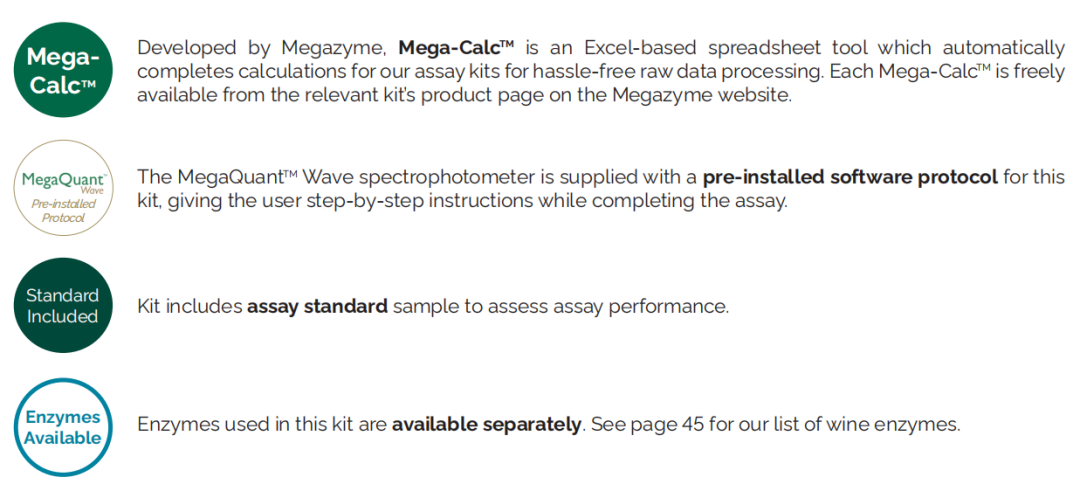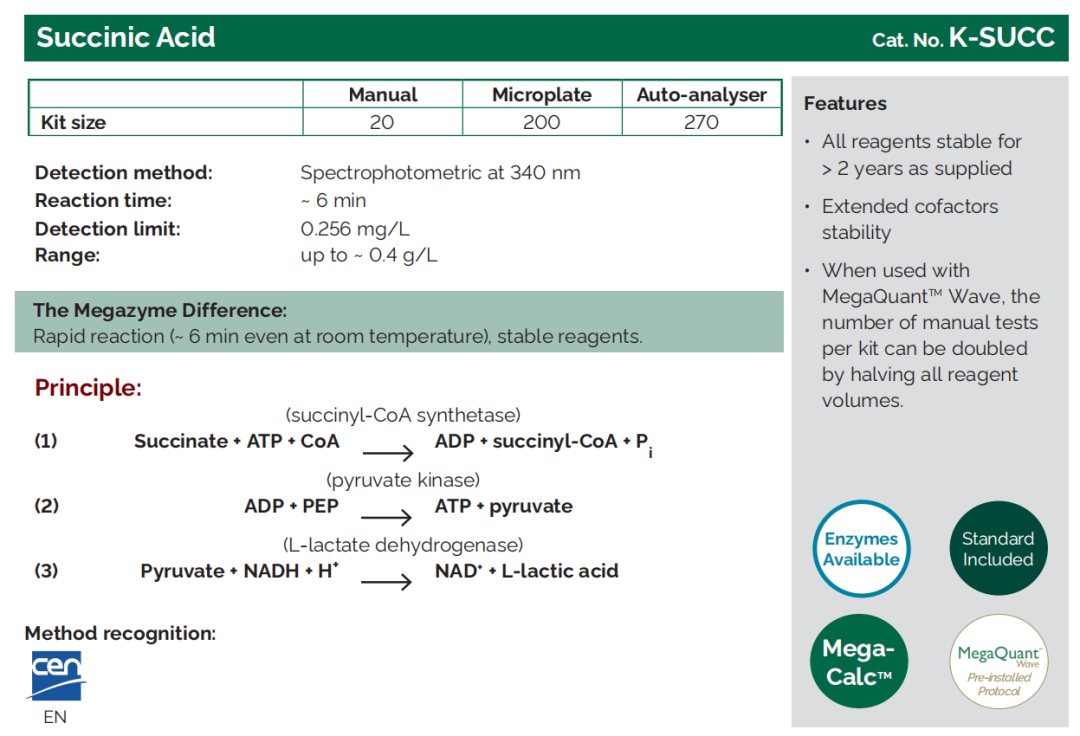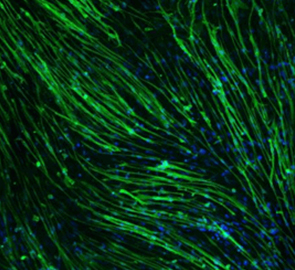【Megazyme】Assay Kits for Wine Analysis(2)
List of Assay Kits
Product Name |
Catalogue No. |
Lactic Acid | |
D - Lactic Acid |
K - DATE |
D/L - Lactic Acid |
K - DLATE |
L - Lactic Acid |
K - LATE |
Malic Acid | |
D - Malic Acid |
K - DMAL |
L - Malic Acid |
K - LMAL, K - LMALAF, K - LMALQR |
Succinic Acid | |
- |
K - SUCC |
Tartaric Acid (for Titratable Acidity) | |
- |
K - TART |
Guide to Symbols
The following icons, symbols and graphics are used in this catalogue.
‘When to test’ graphic
Each analyte guide includes a graphic showing when that analyte is most commonly tested during the vinification process. The steps in the vinification process that are considered are as follows (also used on our wine infographic on page 5):

Every winery and wine will have its own unique testing requirements. However we have aimed to indicate the typical stages during winemaking when measurement of an analyte is likely to provide useful results that will direct further action. If we recommend testing at a specific step, it is displayed in a dark red colour and labelled as follows:

Icons for product features
The data listing for each Megazyme product is shown with a sidebar that summarises the product features. The following symbols are used where appropriate:

Lactic Acid
Normal product of malolactic fermentation: a step in winemaking which converts ‘tart’ malic acid to milder lactic acid.
Where does it come from?
During fermentation, pyruvic acid is converted into one of two forms of lactic acid. D-Lactic acid is generated through yeast fermentation while L-lactic acid is mainly produced by bacteria in malolactic fermentation (which can be intentional or incidental), replacing malic acid with the milder lactic acid.
What does lactic acid mean for my wine?
The presence of lactic acid confers a “creamy” mouthfeel in lower concentrations but may cause spoilage at higher concentrations. A barrel colonised by lactic acid bacteria will induce malolactic fermentation in any wine matured in it.
What can I do with the lactic acid result?
The course of malolactic fermentation is monitored by following the falling level of L-malic acid, and the increasing level of L-lactic acid. The production of D-lactic acid can indicate wine spoilage.




Malic Acid
Sour-tasting organic acid which is converted to less acidic (milder-tasting) lactic acid during malolactic fermentation.
Where does it come from?
L-Malic acid occurs naturally in grape must and is used as an indicator of ripeness. D-malic acid is primarily found in fruit juices and is not a natural by-product of vinification.
What does malic acid mean for my wine?
Malic acid contributes a sour, ‘tart’ flavour to the wine’s overall taste, which is addressed by converting malic acid to the milder lactic acid in malolactic fermentation. The detection of D-malic acid indicates that it has been added artificially to boost the wine’s acidity.
What can I do with the malic acid result?
L-Malic acid is the most commonly-assayed acid in winemaking, allowing the winemaker to assess grape ripeness and to quantify the progress of malolactic fermentation.






Succinic Acid
‘Salty’ and bitter-tasting acid produced during fermentation.
Where does it come from?
Succinic acid is produced from glucose as a normal byproduct of yeast fermentation.
What does succinic acid mean for my wine?
The intense bitter taste of succinic acid causes salivation and can accentuate a wine’s flavour. Concentrations are typically higher in white wine than in red, and tend to differ between vintages.
What can I do with the succinic acid result?
Careful management of succinic acid concentration can have a significant impact on the final taste of the wine. Measuring succinic acid allows winemakers to quantify the results of decisions around fermentation temperatures, yeast strains, aeration, and other factors that promote production of succinic acid.


Tartaric Acid
Occurs naturally in grapes and is one of the most prevalent organic acids. Key indicator of total (titratable) acidity (TA).
Where does it come from?
Tartaric acid occurs naturally in the developing grape, with higher concentrations persisting right through to harvest in cooler climates.
What does tartaric acid mean for my wine?
Tartaric acid has an important role in the wine’s ability to tolerate changes in acid levels without an impact on flavour or quality (that is, in its ‘buffer capacity’). The tartaric acid concentration is therefore indicative of a wine’s chemical stability.
What can I do with the tartaric acid result?
Tartaric acid should be measured in order to gain a baseline tartaric acid concentration ahead of tartration (the process of adding tartaric acid to correct flavour in wines that taste “flat”). Furthermore, tartaric acid is a major component in the titratable acidity (total acidity) of a wine, which may need to be reported along with volatile acidity.


点在看,传递你的品味














